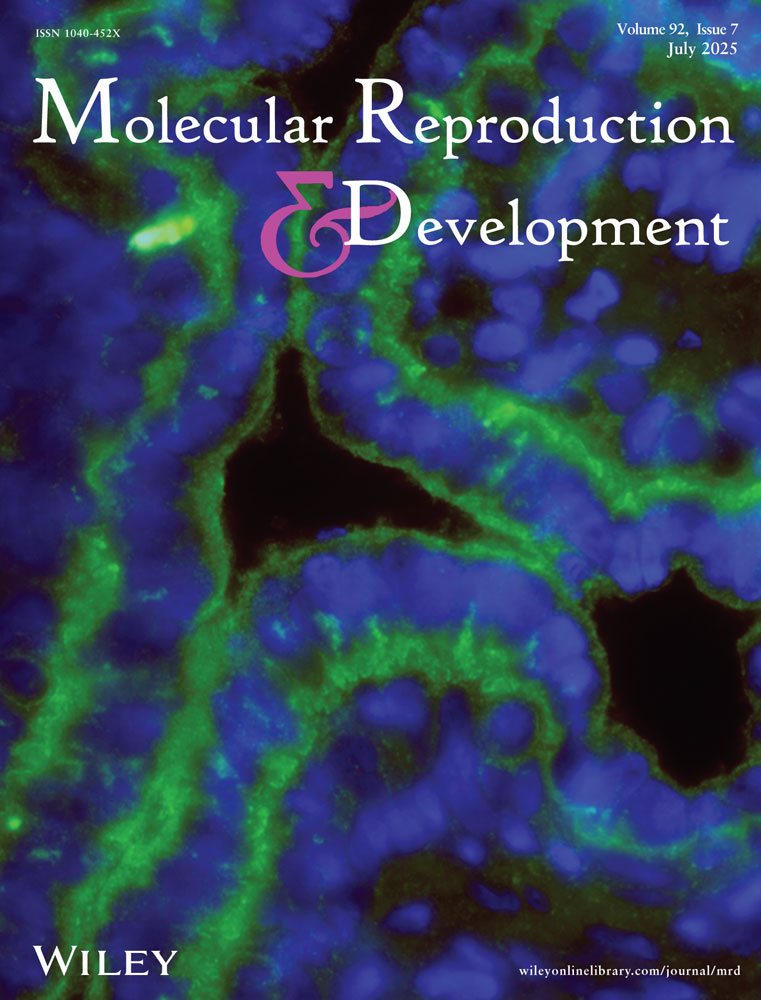Expression patterns of pituitary adenylate cyclase activating polypeptide and its type I receptor mRNAs in the rat placenta
Abstract
Pituitary adenylate cyclase activating polypeptide (PACAP) was first isolated from ovine hypothalamus and is known to act as a tropic factor in various cells. Recent report revealed the expression of PACAP and the PACAP type I (PAC1) receptor in human and rat placentas at term. Placenta is a critical organ that synthesizes several growth and angiogenic factors for its own growth as well as fetal development. However, there is little information regarding the expression pattern and cellular localization of PACAP and PAC1 during pregnancy. The aim of this study was to define the expression and distribution of PACAP and PAC1 receptor mRNAs in the rat placenta during pregnancy. PACAP and PAC1 receptor mRNAs were expressed in decidual cells, chorionic vessels, and stromal cells of the chorionic villi. Interestingly, the expression of these genes varied with the day of gestation. For example, PACAP and PAC1 receptor mRNAs expressed in decidual cells on day 13.5 and 15.5, their expression was strong in chorionic vessels and stromal cells of the chorionic villi within the labyrinth zone on day 17.5, 19.5, and 21.5. In fact, as gestation advanced, the expression of PACAP and PAC1 receptor mRNAs in the decidua cells disappeared, as their high expression became evident in the chorionic vessels and stromal cells of the chorionic villi. Our finding that PACAP and the PAC1 receptor are co-localized and their genes seemingly co-regulated within specific placental areas, strongly suggest that this peptide may play an important role, as an autoregulator or pararegulator via its PAC1 receptor, in physiological functioning of the placenta for gestational maintenance. Mol. Reprod. Dev. 64: 27–31, 2003. © 2003 Wiley-Liss, Inc.




